Microsoft is not making it easy to get on the UHD movie bandwagon
If Microsoft is serious about 4K UHD video content in its Windows Store, it needs to address these four problems first.
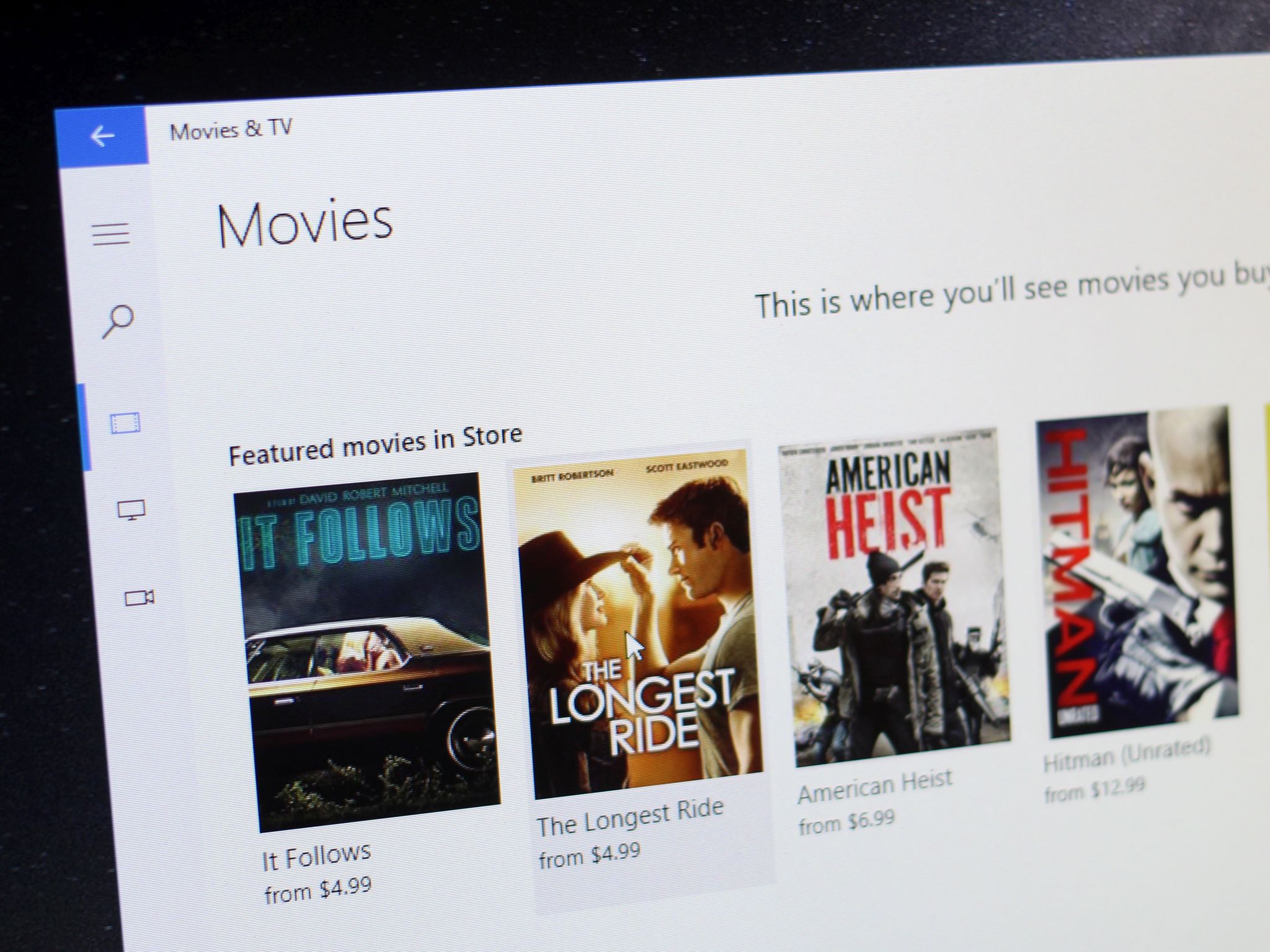
The Windows Store feels like one of those forever evolving projects that is never complete, much like the operating system on which it resides. I can forgive some oversights in knowing that they will be corrected soon, but that doesn't make the user experience any better.
Buying digital content in 4K Ultra-HD (UHD) is still very niche even in late 2017. Most people do not have TVs or the bandwidth to handle such content. Plus, there is just very little content (films mastered in HDR are even fewer). Nonetheless, we all know that UHD for cinema will supplant for HD in the coming years. It's just a matter of time.
That is why it bothers me how bad the UHD experience is in the Windows Store. And even though UHD is still in its early days, Microsoft should be doing as much as it can to push the standard and making it easy for people to adopt, not making it harder.
Problem #1 – Can't find UHD content
Microsoft is good at creating categories but the last I checked there is no simple filter for UHD video content in the Store. That makes finding new titles very difficult, even if there are only a handful (there's just slightly more than thirty UHD titles right now).
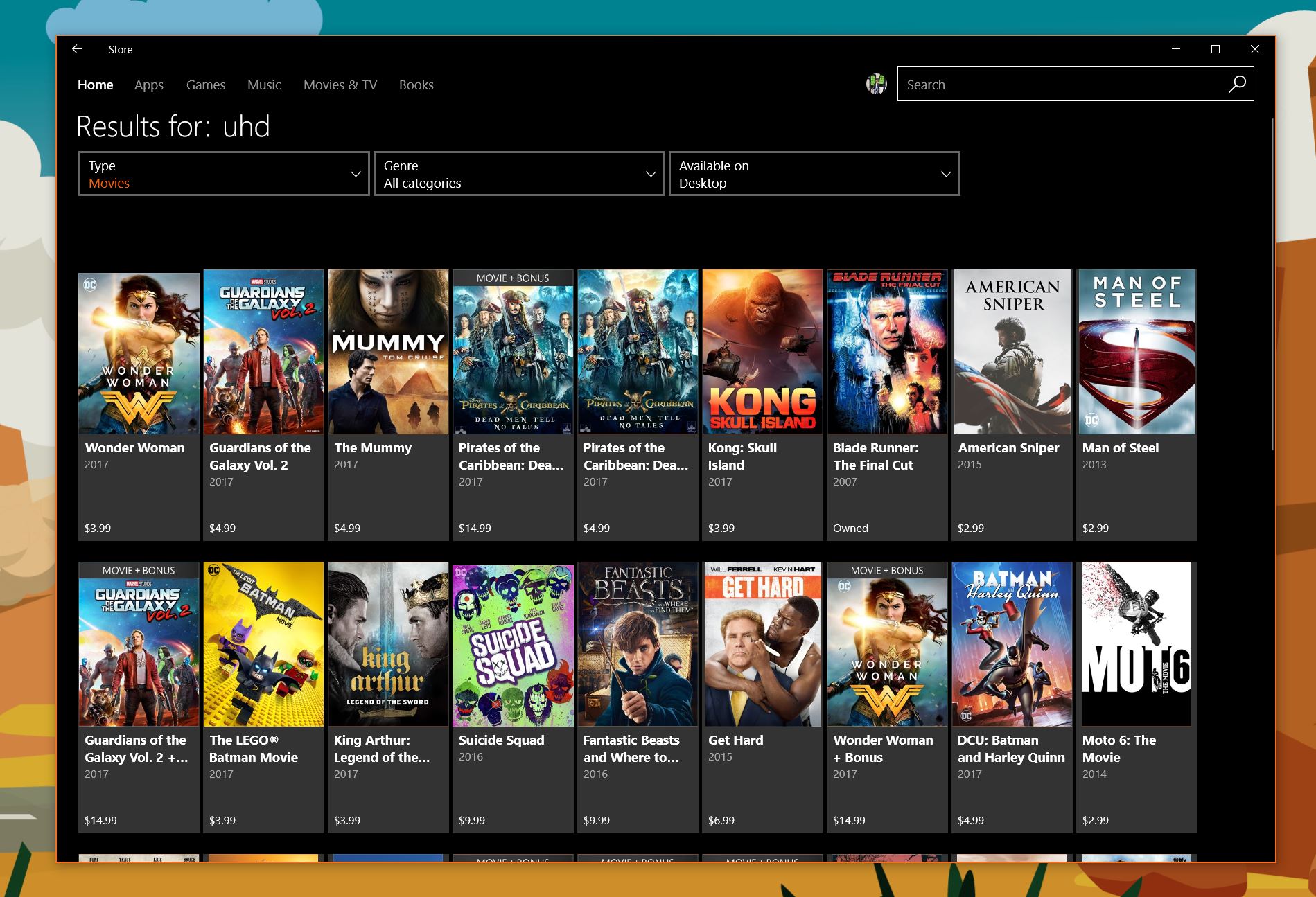
Luckily, I did discover if you search for "UHD" it thankfully does show only films in that higher resolution format. That's a start. It would be better if users could pre-set their preferences in the Settings app or even just have a UHD category that shows new films in the format when they are made available.
Problem #2 – HD is by default
I recently bought the classic Bladerunner: The Final Cut (2007) since it was on sale. As usual, I bought the HD version as that is what I saw with the price. Later, someone mentioned about how expensive the UHD version was, which I agree, but that is not what bothered me.
I had no idea Bladerunner: The Final Cut was even available in UHD! Had I known, I at least would have contemplated purchasing it since I have an Xbox One S and a 4K UHD TV.
Get the Windows Central Newsletter
All the latest news, reviews, and guides for Windows and Xbox diehards.
As it turns out, you need to check the format drop-down menu to see if it's in UHD. By default, it shows HD; since there are only around thirty titles in UHD right now the odds of a movie being available in that format are very slim.
Would it have killed Microsoft to put a small banner or something telling me that a film is also in UHD? Making me dig for it is not conducive to an ideal shopping experience.
Problem #3 – Upgrade? Nope.
Citing the above problem, I then thought "maybe I'll grab the UHD version now, paying to upgrade." I was willing to bite the bullet because Bladerunner is awesome who wouldn't want to watch it remastered in UHD?
Turns out, I can't.
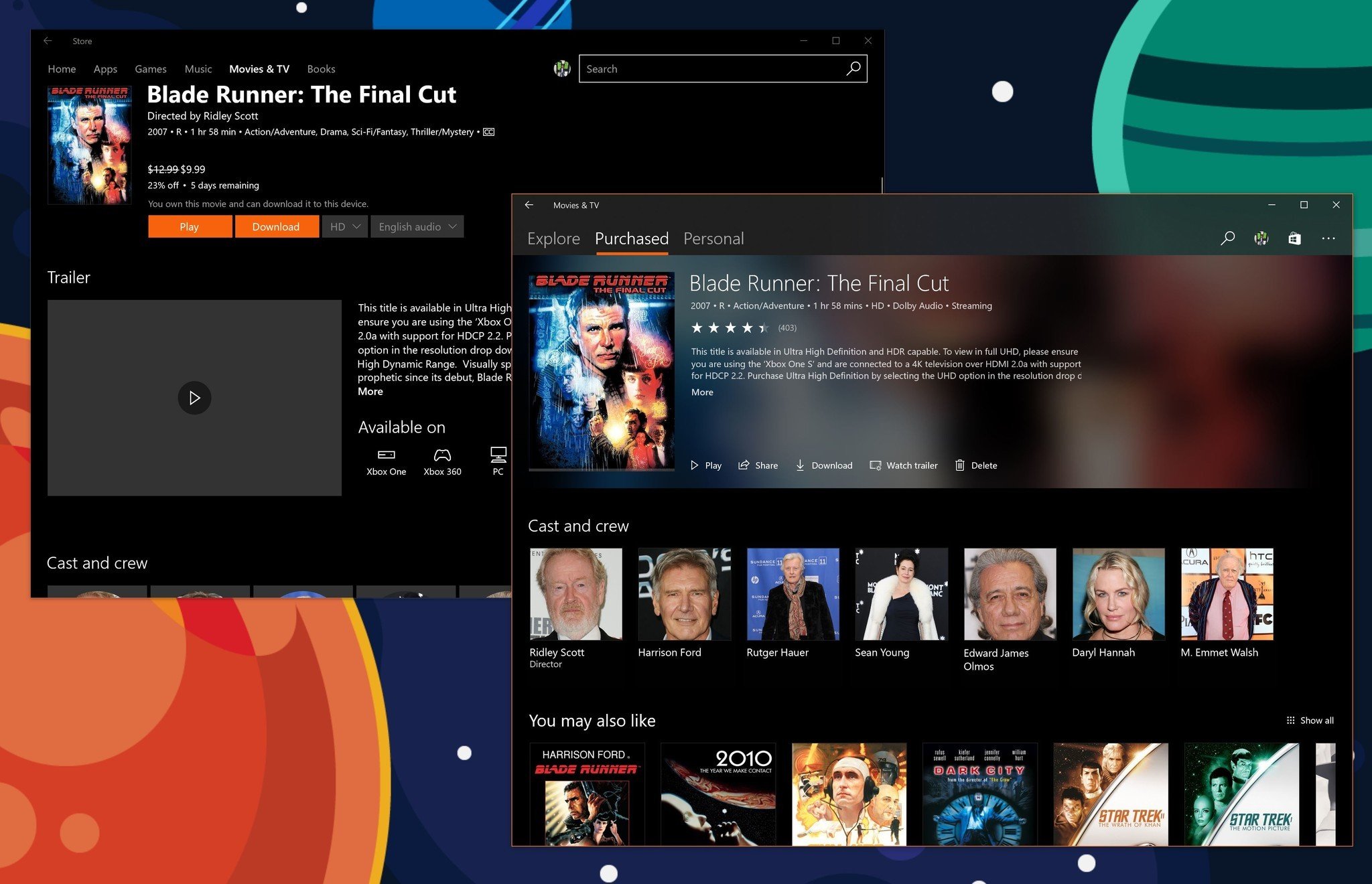
There is no way to re-purchase Bladerunner in UHD once I own the HD version. I can't delete it (as far as I know) from my main library and there is no path to upgrade to the UHD version.
So even if I wanted to buy it twice just for the privilege of UHD, I can't. As of now, I'll never see Bladerunner in 4K. Lame.
Problem #4 – These prices are too damn high!
If you own a 4K UHD TV and a Xbox One S or Xbox One X and you want UHD movies, you are an early adopter. The higher price of buying new tech is known to us and just part of the consumer game. Not a problem.
Wonder Woman (2017) is $19.99 for full HD but jumps to $29.99 for UHD. That's a whole $10 surcharge for the same movie with four times the pixels. Others are a bit lower, like Guardians of the Galaxy: Volume 2, which is "only" $5 higher but you get the point. (Renting is also $2 more for the UHD edition).
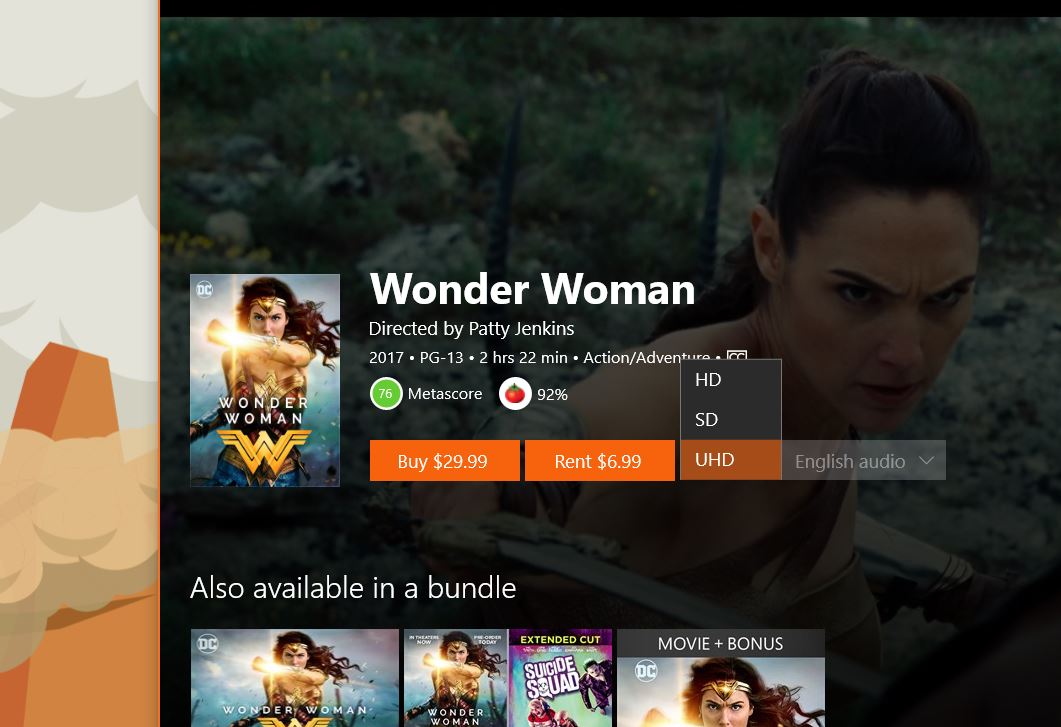
Some of this wouldn't be so bad if Apple didn't recently announce how they will upgrade your existing library to UHD (if available, which it probably isn't anyway) for free. Moreover, they aren't charging more for the UHD version of the film for rentals or purchase.
Apple is doing that for one reason: to drive UHD adoption. It's smart. Of course, my guess is Apple is eating those costs as movie studios play a large part in setting those prices, but that doesn't matter for the consumer. Given a choice between buying on Apple TV versus Xbox One, it is Apple's system that seems better financially.
Problem #5 – Movies & TV is not everywhere
I recently wrote about the demise of Microsoft's music streaming service Groove and how Movies & TV is safe from any cuts. I also mention how that may not matter now as the perception is that Microsoft will cut any service whenever it doesn't fit their vision, which seemingly is always in flux.
Besides dwindling trust in buying digital content from Microsoft, there is the more significant problem of why Microsoft Movies & TV is not available for more products, e.g., Roku, Amazon Fire, or even on iOS and Android.
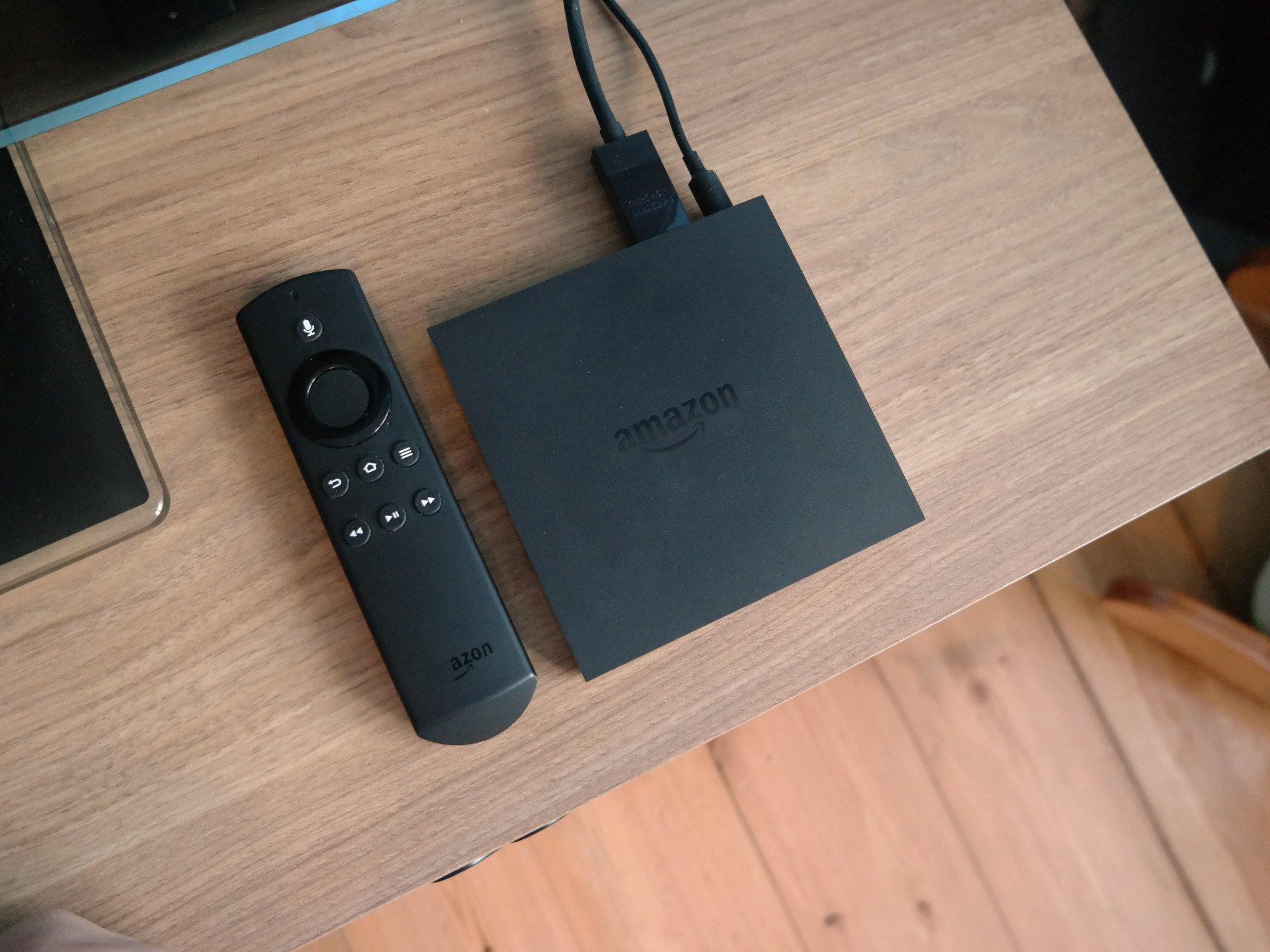
I realize there are probably good reasons for some of that, e.g., tough negotiations, or companies like Amazon who may not want Microsoft on its platform, but that still bums people out who may want to buy a movie and watch it on other devices, even if competing ones.
For Microsoft Movies & TV to succeed, it needs to be in more places — starting with iOS and Android.
That's a wrap?
I've been hammering on Microsoft this week about perception. It's important. People won't invest in buying digital content if they fear a company won't back it. Microsoft is having that problem now, and there's no reason for it besides just lousy communication.
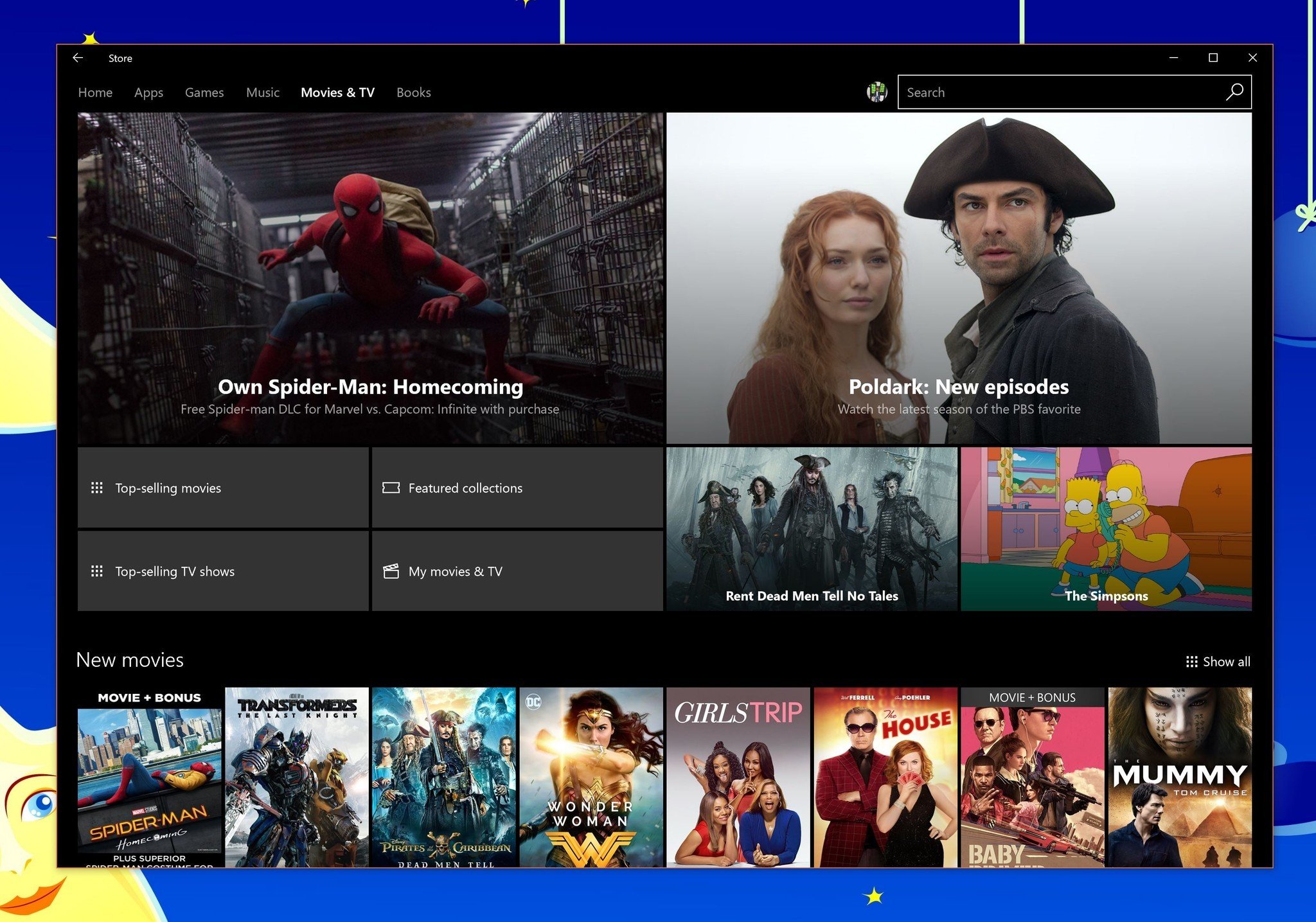
If Microsoft is serious about Movies & TV and its 4K UHD content, then it needs to do more to woo people to it. They already make excellent hardware – the Xbox One S and Xbox One X – that can handle it, so why not give some incentives to spur people to buy those UHD films?
Upgrading people's existing library, keeping prices more neutral, and even just making it easier to find an upgrade would be a great start. I'm not sure Microsoft is ready for that commitment just yet, which means you, dear reader, likely do not either.

Daniel Rubino is the Editor-in-chief of Windows Central. He is also the head reviewer, podcast co-host, and analyst. He has been covering Microsoft since 2007 when this site was called WMExperts (and later Windows Phone Central). His interests include Windows, laptops, next-gen computing, and wearable tech. He has reviewed laptops for over 10 years and is particularly fond of 2-in-1 convertibles, Arm64 processors, new form factors, and thin-and-light PCs. Before all this tech stuff, he worked on a Ph.D. in linguistics, performed polysomnographs in NYC, and was a motion-picture operator for 17 years.
